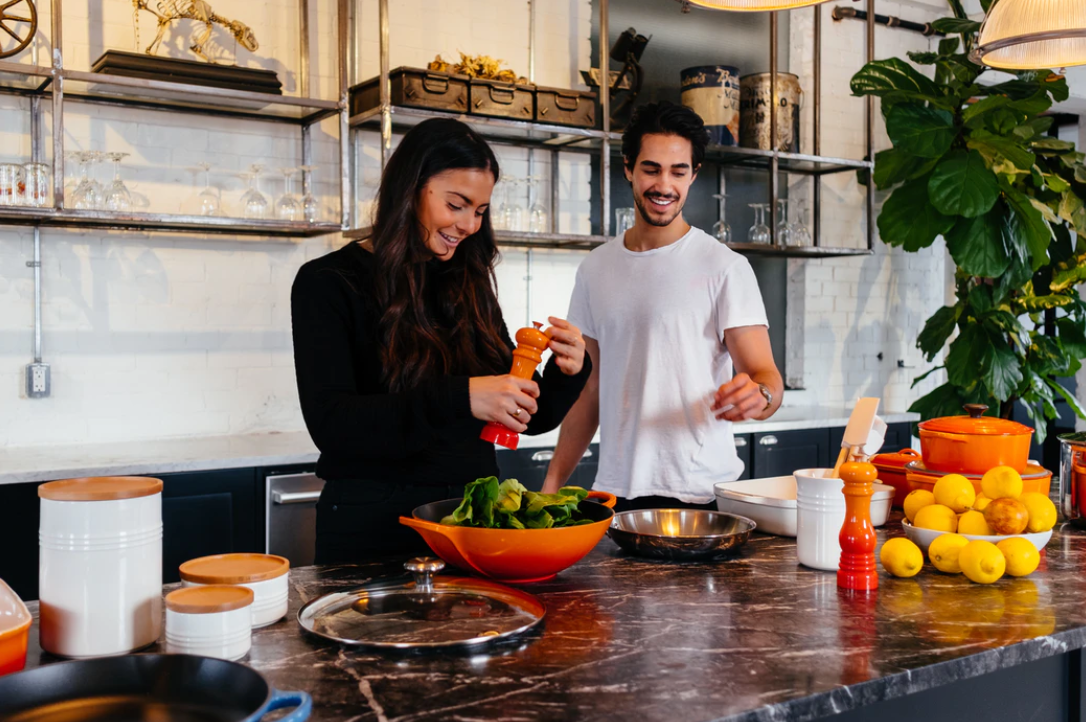Transforming your kitchen into a plastic-free oasis won't happen overnight, but there are small things you can do to begin eliminating plastic wrap, aluminum foil, and baggies from your kitchen starting today! You might already be using reusable tote bags at the grocery store and shopping for bulk items when you can, (great job). From the meat and chicken packaged in plastic cling at the butcher counter to the plastic food containers we buy our yogurt, cooking oil and cheeses in, there’s still an overwhelming amount of plastic used in our kitchens.
Going plastic-free may sound less convenient at first but it doesn’t have to be and the benefits far outweigh the headache. Not only is it good for the environment, it is also good for you and your loved ones. This year the United Nations has declared the plastic pollution of our oceans "a planetary crisis." Each year, about eight million tons of plastic waste (the equivalent of setting five garbage bags full of trash on every foot of coastline around the world) ends up in our oceans, according to National Geographic. And scientists now estimate that more than half of the world's population might have microplastic passing through their bodies, although they're unsure what all that plastic is doing to us. There are small steps we can take to dramatically reduce the use of plastic in our everyday life, ultimately helping to protect our health and the planet.
Before we begin, here is a quick reminder that we all need to be kind to ourselves. It takes effort to live a plastic-free or zero-waste lifestyle. If the majority of the population on Earth took a few small manageable steps together, huge amounts of plastic would be eliminated from oceans and landfills. It’s not about striving for perfection, it’s about trying to improve step by step.
Reduce the Plastic in Your Kitchen While You're Shopping
Reducing plastic use in your kitchen starts by changing some of the ways you shop. Start by planning meals before heading to the store, so you can shop with a focused list of things you need. This will also help you reduce the amount of food you waste. Farmers' markets, zero-waste stores, and bulk-food aisles at traditional grocery stores make it easy to purchase only the quantity of ingredients you need while using reusable containers. But if those shopping options aren't available to you or aren't possible in the scope of your normal routine, there are still steps you can take.
Rather than simply grabbing your regular products at the local market, try to see how many items you can replace that have no plastic in their packaging. Buy freshly baked bread from a local bakery to take home in your reusable bag rather than buying commercially baked bread in a plastic bag. Select fresh produce, sold individually, and use reusable produce bags. Try to buy condiments, beverages, and other items in glass versus plastic containers and try to reuse that container again and again. And instead of buying individually wrapped items, buy the biggest full-size option—looking at you single-serve yogurt and snack-sized chip bags. You can always portion them into reusable to-go containers at home.

How to Reduce Plastic Use When Storing Food
When you do need to store leftovers or ingredients, it's all about your mindset. You might think it’s easier to throw away a single-use bag or two rather than wash several bowls, but it really is worth it to try to get into the habit of using glass or metal storage containers. Cover bowls or containers with reusable silicone covers, like our Food Hugger Lids. Rather than single-use ones, use washable silicone bags—they are available in multiple sizes, Food Hugger Bags. Eventually, it will become routine and you'll end up with less household waste. Plus, many metal and glass storage containers can have dual purposes able to multitask as mixing bowls or baking pans, helping to reduce kitchen clutter.

Store Your Food in Glass Jars
After bringing produce and bulk items home, you can store things like broccoli florets, brussels sprouts, strawberries, blueberries, green beans, carrots, cucumbers, sprouts, and radishes in glass mason jars in the fridge. Celery can be trimmed and placed in a tall half gallon mason jar half-filled with water. It will stay fresh for days compared to storing it in plastic bags. Our Food Huggers aren't just great for keeping cut fruits and veggies fresh, they also fit on most cans and jars! Food Huggers

Store greens in a Wet Terry Cloth Towel
Storing lettuce and greens and keeping them crisp can be a challenge. It might sound counterintuitive to store leafy greens in a wet towel in the fridge, but guess what? That TikTok hack wasn’t lying, it works like a charm! Lettuces and kale and chard stay fresh for so much longer. No wilting. No slimy produce. No soggy greens. Just wet the towel, wring it out, and place your produce inside. The Terry cloth creates a humid environment that lets vegetables breathe. Vegetables remain crisp and vibrant for twice as long as if stored in plastic.
Start with a few of these ideas to get the hang of it. Don’t stress if you can’t completely change your buying habits all at once. We created the bundles to allow you to have all the tools you will need to keep your food fresh and reduce waste. Eco Pro Bundle

